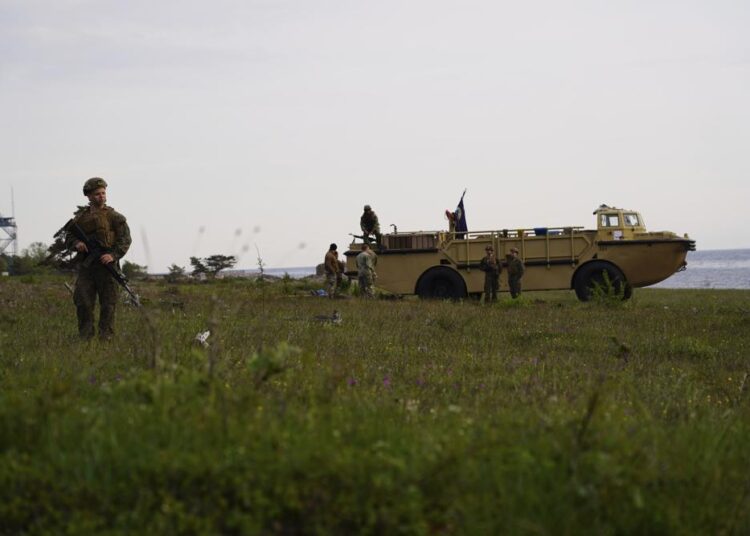VISBY, Sweden — Having to defend Gotland against a foreign invasion seemed such a far-fetched notion to Swedish decision-makers at the start of the century that they demilitarised the Baltic Sea island.
Now, the Swedish Armed Forces are back, and they are practicing with U.S. troops not just how to defend the island with a population of 58,000, but how to take it back from a foreign aggressor.
U.S. Marines have conducted air drops and amphibious landings on Gotland as part of a NATO exercise in the Baltic Sea.
Though the annual BALTOPS exercise isn’t held in response to a specific threat, this year’s edition comes amid heightened tensions with Russia following its invasion of Ukraine. About 7,000 military personnel and 45 ships from 14 NATO countries, as well as Sweden and Finland, took part.
Despite their non-aligned status, the two Nordic have practiced regularly with NATO countries, and their governments decided in the wake of the Ukraine war to seek full membership in the Western military alliance.
“I’m feeling really prepared. I mean, we have made a big deployment on Gotland, and we will defend Gotland,” Swedish Col. Magnus Frykvall, the island’s regiment commander, said as military hardware was being deployed on the coast. “It’s a really hard task to take a defended island.”
Strategically located in the middle of the southern part of the Baltic Sea, Gotland has seen foreign invasions throughout its history, the most recent one in 1808, when Russian forces briefly occupied it.
But after the Cold War ended, Sweden felt the risk of a Russian aggression was so remote it refocused its armed forces on foreign peacekeeping operations rather than territorial defense. The Gotland regiment was closed in 2005 as Sweden downsized its military.
Russia’s annexation of Ukraine’s Crimea Peninsula in 2014 led to a rethink, and a new regiment was established on Gotland in 2018. There are now around 400 Swedish soldiers permanently based on the island. Further reinforcements are planned following Russia’s invasion of Ukraine.
Nonetheless, many Gotlanders feel Sweden would not be able to defend the island on its own.
“If we were to be invaded, we wouldn’t stand a chance because our defense is too small. We have a really modern and good defense, but it’s too small,” said Lars Söderdahl, a 33-year-old chef in the island’s main town, Visby.
Sweden, which has stayed out of military alliances since the Napoleonic Wars, applied for NATO membership together with Finland in a historic move last month. NATO’s existing 30 members are set to discuss the issue this month. Turkey has threatened to hold up the applications over the two countries’ perceived support for Kurdish groups.
Finland and Sweden have sought security assurances from the U.S. and other NATO countries during the application period.
Kicking off the BALTOPS exercises last weekend in Stockholm, U.S. Gen. Mark Milley, chairman of the Joint Chiefs of Staff, said it was important for the NATO allies “to show solidarity with both Finland and Sweden.”
Their membership in the alliance would leave Russia in a difficult military position, with the Baltic Sea encircled by NATO members except for in Russia’s Baltic exclave of Kaliningrad and the Russian city of St. Petersburg and its surrounding areas.






Discussion about this post